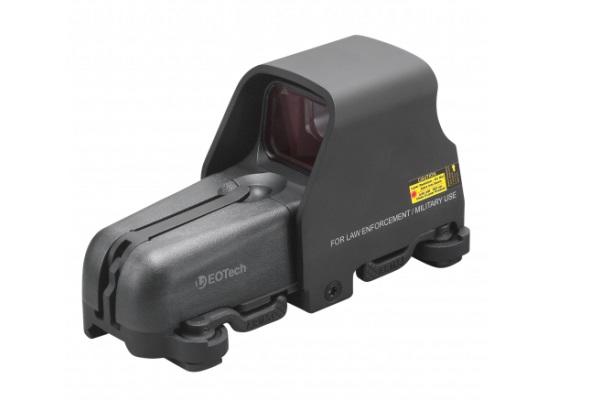LAS VEGAS -- EOTech, the maker of a once popular tactical optic, is trying to rebuild customer confidence that was damaged in the wake of a crippling, civil fraud lawsuit over defective rifle sights.
Late last year, L-3 Communications Holdings Inc. -- the parent company of EOTech -- agreed to pay $25.6 million to settle a lawsuit that accuses the defense firm of knowingly selling the U.S. military and government agencies optics that failed in extreme temperatures and humid weather conditions.
EOTech has supplied thousands of holographic weapons sights to infantry and special operations units that fought in Iraq and Afghanistan as well as law enforcement agencies and civilian consumers.
At SHOT Show 2016, EOTech officials displayed a new openness to customers in an attempt to explain the specifics of the problems and what the firm has done to fix them.
"We are trying to make people whole and make sure that they are satisfied with their product," John Bailey, director of Marketing for EOTech said Wednesday. "A day and a half into the show, I think there is a positive outlook; I think they are happy we are communicating and what we are communicating now because it took a long time for us to be able to communicate."
Preet Bharara, U.S. attorney for the Southern District of New York, filed the Nov. 24 civil fraud lawsuit alleging that L-3 officials knew that its sights failed to perform as advertised in extreme temperature ranges since 2006.
The holographic sights experienced experienced a condition referred to as "thermal drift," meaning that the sight's point of aim differed from its point of impact when subjected to hot or cold temperature, according to court documents.
"Thermal drift is basically when you go from ambient temperature to temperature extreme there is going to be a point of impact shift," Bailey said. "We have realized that our sight could shift … in those extremes, -40 and 122 Fahrenheit. If you go from 73 degrees to 50 degrees, you are not going to see as much shift; if you go from 73 to -40, you are going to see more shift."
Thermal drift is a reality in the red-dot world, Baily argues.
"We are trying to make improvements to see in the future if we can reduce that," he said. "We are not there yet; I think we are making strides, but it won't go away and it is evident in really every optic, it's just to what degree."
EOTech maintains that it has fixed two other problems that have affected its sights' accuracy.
One issue was moisture incursion, also called reticle fade, Baily said, explaining that EOTech replaced a component in the sight that fixed the problem in 2014. The second was cold weather distortion, which was solved in 2008, he said.
"What happened there was in extreme cold temperatures, the reticle would go from a dot to a larger blob, so there was a shift in impact," Bailey said.
Beginning around 32 degrees Fahrenheit, the sights' aiming dot became significantly distorted, affecting the accuracy of the sight and worsening as the temperature approached -40 degrees, court documents say. At sub-zero temperatures, the distortion of the aiming dot affected the accuracy of the sights by more than 20 inches for every 100 yards, court documents state.
EOTech is offering to fix any sight that may have these two problems, Bailey said. Company officials are also telling customers that the sights also can suffer from Parallax, he said. Parallax is essentially an optical illusion. It presents itself as the apparent movement of the reticle in relation to the target.
"Our sights will exhibit very little or no parallax in the center of the window," he said. "If the red dot is not centered and off to the side, you could experience more parallax." He added, "Yes, we have parallax, but every other optic has parallax to a degree as well."
Bailey said said most people will not experience any of these issues and that the company is trying to ensure customers are satisfied one way or another.
"We are doing repairs, we are doing replacements to people that aren't happy and we are doing refunds," he said.
Bailey said the company remains confident in its product and says customers should think carefully before deciding to buy another optic.
"We are trying to educate consumers and dealers on where we stand with our performance," he said. "Before you would make any harsh choices where you remove the optic, think about what you would replace it with."
--Matthew Cox can be reached at matthew.cox@military.com.





























